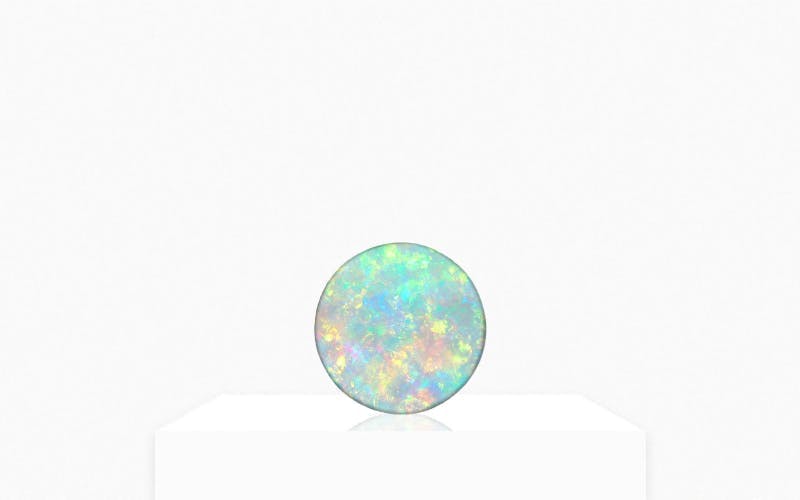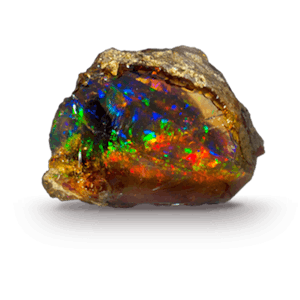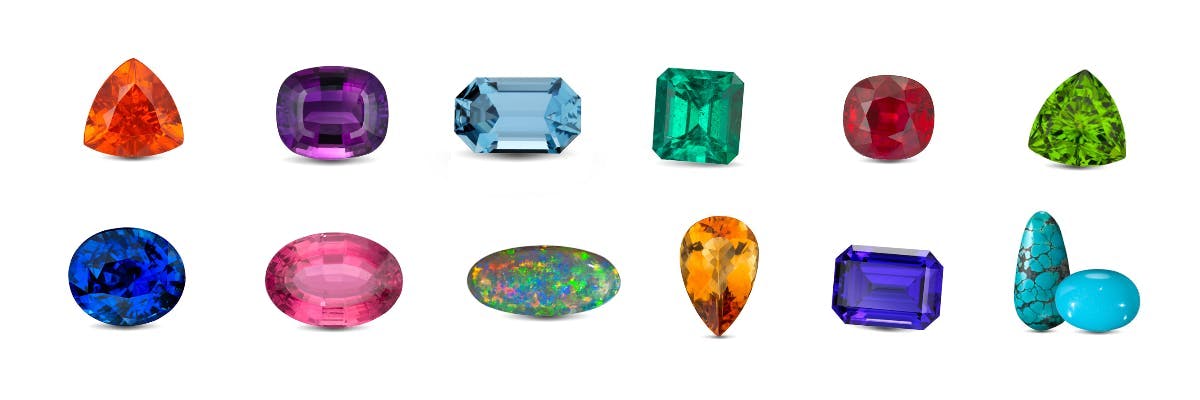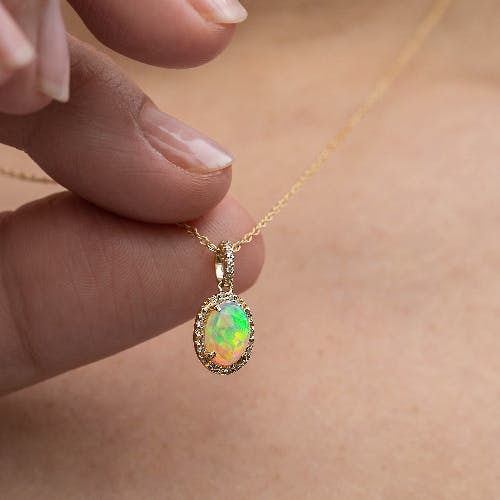Learn About Opal


Because opal has the colors of other gems, the Romans thought it was the most precious and powerful of all. The Bedouins believed that opals contained lightning and fell from the sky during thunderstorms. When Australia’s mines began to produce opals commercially in the 1890s, it quickly became the world’s primary source for this October birthstone.
Opal Birthstones & Anniversaries
Opal is an October birthstone.

Rough Opal

Polished Opal
Overview of Opal
he name “opal” originates from the Greek word opallios, which meant “to see a change in color.” The Roman scholar Pliny used the word opalus when he wrote about this gemstone’s kaleidoscopic “play” of rainbow colors that could simulate shades of any stone.
Opal’s characteristic “play-of-color” was explained in the 1960s, when scientists discovered that it’s composed of microscopic silica spheres that diffract light to display various colors of the rainbow. These flashy gemstones are called “precious opals.” Those without play-of-color are “common opals.”
Dozens of opal varieties exist, but only a few, such as fire opal and boulder opal, are universally recognized. Opals are often referred to by their background “body color” of black or white.
Opal’s classic country of origin is Australia. Seasonal rains soaked the parched Outback, carrying silica deposits underground into cracks between layers of rock. When the water evaporated, these deposits formed opal. Sometimes, silica seeped into spaces around wood, seashells and skeletons, resulting in opalized fossils.
Since opal was discovered in Australia around 1850, the country has produced 95 percent of the world’s supply. Opal is also mined in Mexico, Brazil, Honduras, Ethiopia, the Czech Republic, and parts of the U.S., including Nevada and Idaho.
The water content of opal gems can range from three to 21 percent—usually between six and 10 in gem-quality material. This, combined with hardness of only 5.5 to 6 on the Mohs scale, makes opal a delicate gemstone that can crack or “craze” under extreme temperature, dehydration, or direct light. Wearing opal jewelry is well worth the extra care, though. This October birthstone has remained a popular choice for centuries.
History of Opal
In 75 AD, the Roman scholar Pliny compared opals to volcanoes and vibrant paintings, noting that their dancing “play” of rainbow colors could simulate shades of any gemstone.
Centuries of legends surround opal gemstones. During the Middle Ages, opal was thought to bring the wearer luck. However, that changed in the early 1800s when a story was published about an enchanted princess who wore an opal that changed colors with her moods. A few drops of holy water extinguished the stone’s magic fire, though, and the woman soon died.
Discoveries of opal deposits in Australia revived opal’s image after 1850. The country began producing 95 percent of the world’s opal gemstone supply and many of its finest opal specimens.
The world’s largest and most valuable opal, “Olympic Australis,” came from Coober Pedy, Australia in 1956, during the Olympic Games in Melbourne. Valued at $2.5 million in 2005, this gemstone measures 11 inches long and weighs 17,000 carats (7.6 pounds).
After scientists discovered the spherical silica structure of opal in the 1960s, they figured out how to create synthetic opal in 1974.
Since then, opal gemstones have gained more popularity through recent discoveries in Ethiopia. Material mined in the Shewa Province in 1994 wasn’t desirable because it was dark and tended to crack easily. Deposits in the Wollo Province, discovered in 2008, brought vivid play-of-color displays to the opal market.
Australia’s depleting supplies of classic opal have impacted the price of this uniquely kaleidoscopic gemstone. Because its flashing play-of-color can suit many changing moods and tastes, the opal stays in high demand.
Frequently asked questions about Opal
Gemstone Guide
Learn more about colorful gemstones, their symbolism, which stone represents your birthstone, which stone to celebrate an Anniversary with and more ways to incorporate colorful gems in to your jewelry box.


Visit us in any Lee Michaels Fine Jewelry location to browse a more robust assortment of opal earrings, opal necklaces, opal bracelets, David Yurman opal jewelry and many more. Shop more jewelry trends at any Lee Michaels Fine Jewelry store near you. In Baton Rouge, Louisiana, a Lee Michaels Fine Jewelry store is located inside the Mall of Louisiana and there is also a Lee Michaels Fine Jewelry store located at the corner of Corporate Boulevard and Jefferson Highway near mid-city. In Lafayette, Louisiana, a Lee Michaels Fine Jewelry store is located on Ambassador Caffery. In Shreveport, Louisiana, a Lee Michaels Fine Jewelry store is located on Youree Drive at East 70th. Just outside of New Orleans, Louisiana, in Metairie, a Lee Michaels Fine Jewelry store is located on Causeway Boulevard at Lakeside Shopping Center. In San Antonio, Texas there are two Lee Michaels Fine Jewelry stores. Find one at The Shops at La Cantera and another located inside the Northstar Mall on San Pedro Avenue. In Jackson, Mississippi, visit a Lee Michaels Fine Jewelry store located at the Renaissance at Colony Park on Highland Colony Parkway. Visit the newest Lee Michaels Fine Jewelry store, located in ABQ Uptown of Albuquerque, New Mexico.
